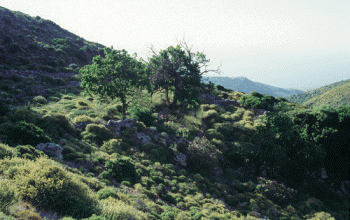American Journal of Archaeology | The Journal of the Archaeological Institute of America
You are here
Roussa Ekklesia, Part 2: Lamps, Drinking Vessels, and Kernoi
April 2010 (114.2)
Roussa Ekklesia, Part 2: Lamps, Drinking Vessels, and Kernoi
This study, in two parts, analyzes the votives from a sanctuary site near Roussa Ekklesia in east Crete. Part 1 (AJA 113 [2009] 353–404) documents the terracotta plaques and figurines (ca. 630–450 B.C.E.). Part 2, the present article, examines an assemblage of lamps, drinking vessels, and kernoi from the same sanctuary (ca. 500–150 B.C.E.). One aim of this article is to establish preliminary chronologies for local lamps based on shape, decoration, and other stylistic features. Another aim is to track religious history: this assemblage documents a transition from an archaic to a classical form of worship. Whereas symbolic offerings with representational imagery are the chief manifestations of cult in the Archaic period, Classical and Hellenistic worshipers at Roussa Ekklesia left utilitarian objects, hinting at a wider range of sanctuary activities. These collective rituals featured light at nocturnal ceremonies and libation offerings to a goddess charged with natural and human fertility.
Roussa Ekklesia, Part 2: Lamps, Drinking Vessels, and Kernoi
By Brice Erickson
American Journal of Archaeology Vol. 114, No. 2 (April 2010), pp. 217–252
DOI: 10.3764/aja.114.2.217
© 2010 Archaeological Institute of America


